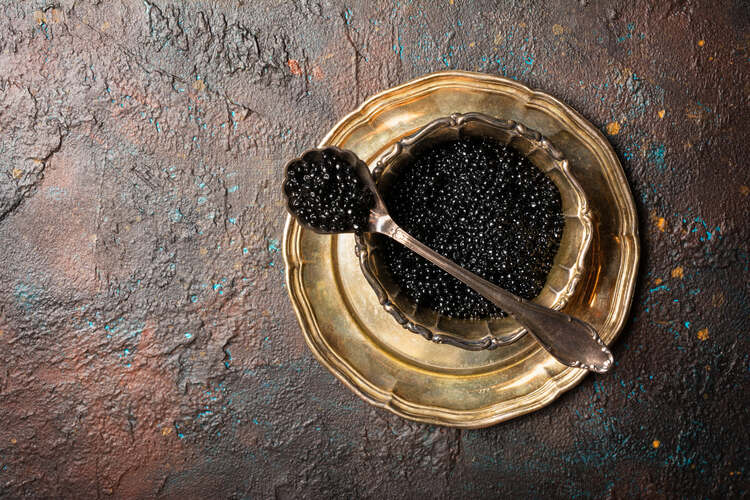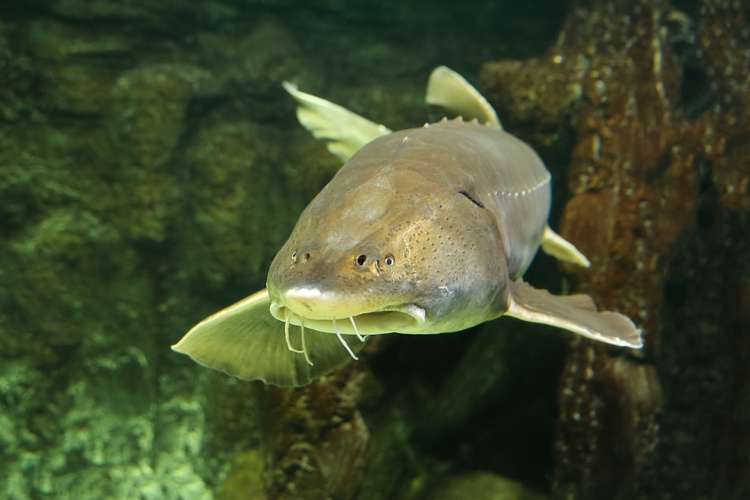
Report claims that half of the caviar sold in Europe is illegally sourced and some isn’t caviar at all
By
For over a thousand years caviar has graced the tables of royalty and the aristocracy. The caviar from certain types of sturgeon, such as sterlet caviar, was once reserved exclusively for the royal families of Russia, Iran and Austria. While for the last 700 years, any sturgeon caught within UK inshore waters, automatically belonged to the Crown.
Caviar is the roe (ripe egg masses) of sturgeon and certain other fish. Sturgeon are a long-lived, slow-growing family of fish that can grow up to three metres in length. Traditionally, caviar refers only to the roe from wild sturgeon from the Caspian and the Black Sea (today though it’s farmed elsewhere), but thanks to over-harvesting, most sturgeon species are now very rare in the wild and the harvesting of wild sturgeon is illegal internationally.
With a culinary fan base that includes kings and queens, it’s perhaps not surprising that caviar can be eye-wateringly expensive. In 2023, a kilo of the very rare Strottarga Bianco caviar, which is produced from the Siberian albino sturgeon at just one small, family-owned farm in Austria, costs US$113,630 a kilo. To add a little glitz to the fish eggs, edible 22-karat gold is dusted like a really extravagant parmesan cheese, on top of the caviar before eating.
But, are consumers of caviar being fleeced? According to a report published in the journal Current Biology the answer is frequently yes. The report, which was authored by Arne Ludwig of the Leibniz-Institute for Zoo and Wildlife Research and Jutta Jahrl from WWF-Austria, claims that half of the caviar in Europe that the team tested was illegal and some of the samples weren’t even caviar at all.
To come to these conclusions, the report authors tested 149 caviar and sturgeon meat samples from native sturgeon regions of Europe (Bulgaria, Romania, Serbia and Ukraine). The eggs and meat were sourced online, from shops, markets, restaurants and aquaculture facilities.

The team analysed the DNA and isotope patterns, the team found that 21 per cent of the samples came from illegally caught wild sturgeon and that these wild-caught fish were sold in all the sample countries. They also found that 29 per cent of the samples violated CITES regulations and trade laws, such as caviar that listed the wrong species of sturgeon or the wrong country of origin. Thirty-two per cent of the samples were listed as ‘customer deception’, such as samples declared as wild but that were actually from fish farms. Three of the sturgeon samples, which were sold in Romania as a sturgeon soup, turned out not to be sturgeon at all but European catfish or Nile perch.
While most of us aren’t going to shed tears over the thought of the aristocracy and mega-wealthy being sold catfish instead of sturgeon, there is, the report authors say, a worrying side to all this.
‘Our results indicate an ongoing demand for wild sturgeon products, which is alarming, since these products endanger wild sturgeon populations,’ the authors say.
They go on to say: ‘These findings bear evidence that a high ratio of poached sturgeon products originates from EU and accession candidate states’ and that the ‘Control of caviar and sturgeon trade in the EU and candidate member states urgently needs improvement to ensure that Danube sturgeon populations will have a future’.
Related articles:




